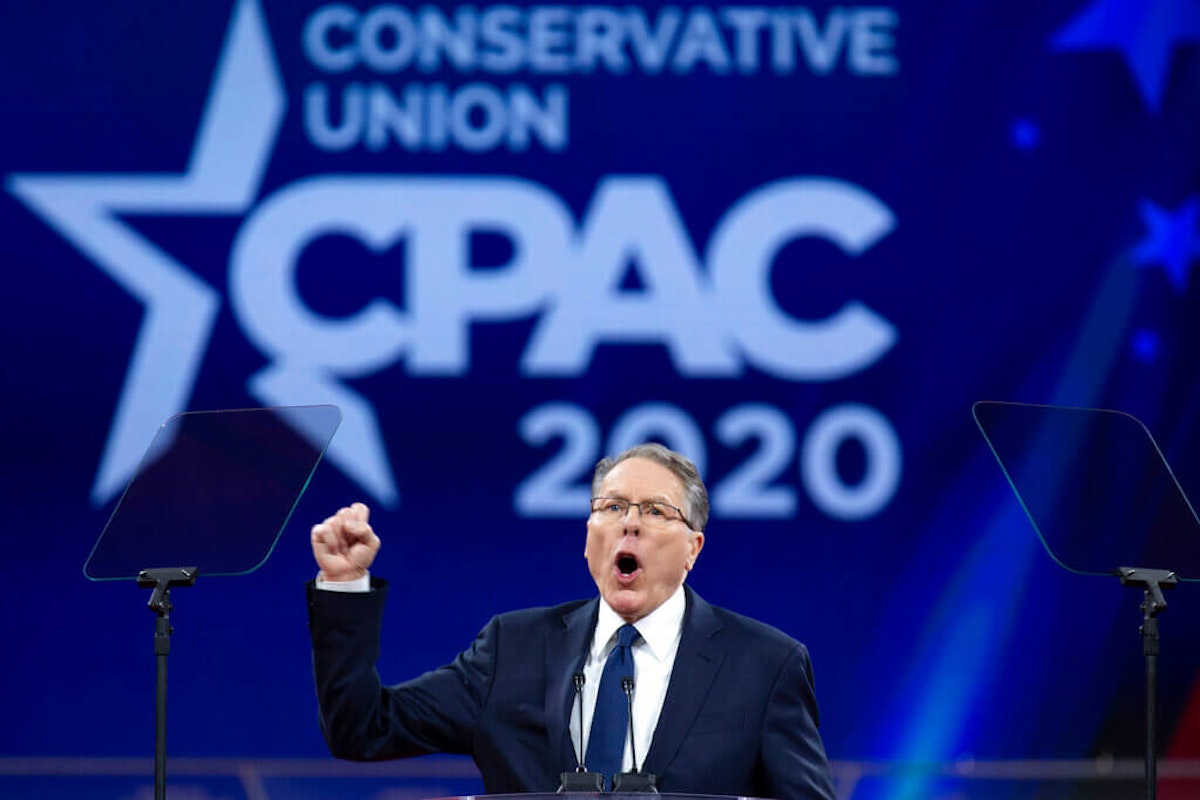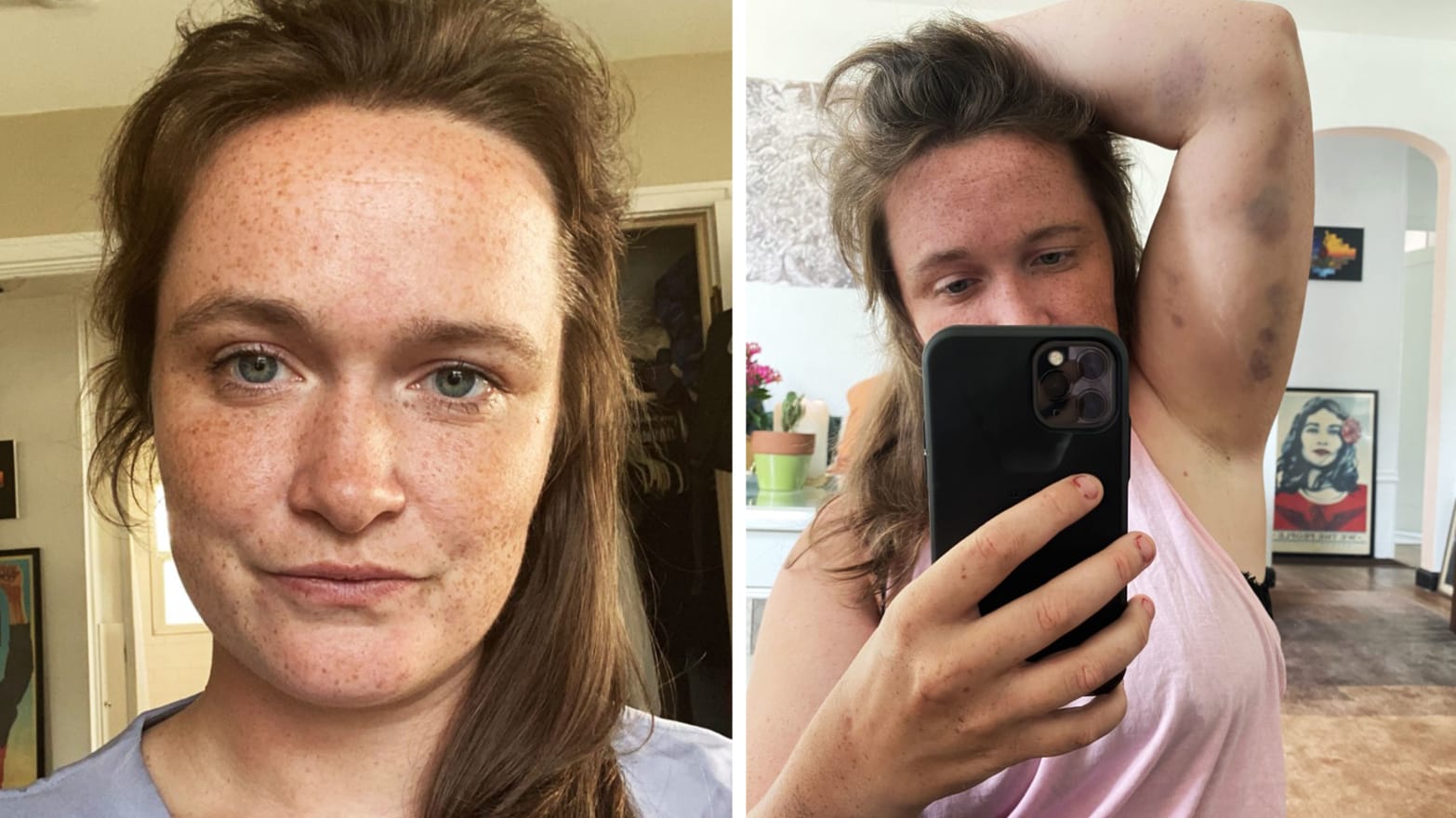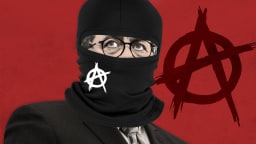With legal troubles mounting and spending slowing, NRA promises to boost Trump
By Ian Karbal and Anna Massoglia
President Donald Trump sits with NRA CEO Wayne LaPierre (Michael Reynolds – Pool/Getty Images)
The National Rifle Association plans to pour millions of dollars into President Donald Trump’s 2020 re-election effort despite escalating legal turmoil and plummeting cash flow leaving its election spending lagging behind recent cycles.
The NRA was having a bad year even before New York Attorney General Letitia James filed a lawsuit on Thursday with the aim of dissolving the group entirely.
Within hours of the New York Attorney General’s announcement, however, the NRA announced plans of its own to “spend tens of millions of dollars” on 2020 elections in an interview with the Washington Free Beacon. Jason Ouimet, who runs the NRA’s lobbying arm and political action committee, said the NRA plans to “spend heavily in battleground states to help reelect President Donald Trump” with a focus on Arizona, Colorado, Pennsylvania, North Carolina and Wisconsin.
While the NRA’s ambitious 2020 electoral strategy projects tens of millions of dollars in political spending, the gun rights group’s spending at this point in the 2020 election cycle hardly comes close to that amount.
The leading gun rights advocacy group has yet to even crack $1 million in outside spending reported to the Federal Election Commission since the start of the 2020 election cycle, shelling out roughly $900,000 through the first week of August. The NRA reported spending nearly twice that amount with more than $1.6 million on 2018 elections by this point last cycle and over nine times that amount at this point in the 2016 election cycle with more than $8.2 million.
Altogether, the NRA reported more than $54 million in record-breaking political spending supporting Republican candidates in the 2016 election cycle with most of that supporting Trump over Hillary Clinton.
As in 2016, most of the NRA’s 2020 political spending reported to the FEC has gone to support Trump by boosting his re-election efforts with activities including canvassing and peer-to-peer text campaigns, but at a fraction of the scale. The rest of the NRA’s 2020 federal political spending is mostly flowing to support Republicans in hotly-contested U.S. Senate races.
The NRA’s lagging spending has allowed gun control groups to outpace gun rights groups on political spending in the 2020 elections so far, spending $2.2 million compared to $1.4 million from their pro-gun counterparts. Last cycle was the first in at least a decade that saw gun control groups outspend gun rights groups, due mostly to a massive decrease in NRA spending from previous years.
The NRA has also spent less money lobbying than it has in the first half of any year in more than a decade, even as the organization fought to have gun stores and gun ranges included on lists of essential businesses during the COVID-19 pandemic.
The NRA spent more than $2.2 million buying digital ads through its main Facebook page during the 2020 election as well with roughly $750,000 more going to Google ads. The ads are a mix of fundraising solicitations, issue ads, retail and political messaging boosting candidates at multiple levels of government. Other official NRA-branded pages have also spent hundreds of thousands more on digital ads, according to OpenSecrets’ online ad spending data.
The New York Attorney General’s lawsuit alleges NRA executives “looted or wasted” the lobbying group’s assets to the tune of $63 million between 2015 and 2018, part of a larger pattern spanning NRA Chief Executive Wayne LaPierre’s three-decade tenure. Allegations describe a pattern of “excessive” personal spending on behalf of a handful of executives, often without disclosure and seemingly unchecked by the group’s board. The lawsuit’s introduction marked the end of one of several similar investigations that had cost the group $100 million in legal fees by January.
Within hours of the New York Attorney General’s lawsuit announcement, Washington, D.C., Attorney General Karl Racine announced that his office is suing the NRA Foundation for misuse of charitable funds. That office alleges that the NRA Foundation illegally diverted funds to the NRA’s lobbying arm in order to cover LaPierre’s spending. The NRA stands accused of “inappropriate spending,” “self-dealing” and other questionable transactions.
While the New York Attorney General’s office pursues dissolution of the NRA, suggesting a diversion of their remaining funds to other charities with similar missions, their D.C. counterpart is seeking enforcement actions of its own. The D.C. Attorney General’s lawsuit seeks to modify NRA Foundation policies to ensure the foundation has “proper independence” from the NRA, force NRA officials who might otherwise be unjustly enriched to transfer money improperly diverted to the NRA to the intended parties, and to mandate nonprofit governance training for NRA officials.
NRA Foundation payments to the NRA’s main lobbying arm listed as reimbursements increased to more than $17.4 million in its most recently filed tax return, according to an earlier OpenSecrets investigation, the largest amount in at least a decade and nearly three times the $6 million reported in reimbursements the prior year.
The organization responded to the New York Attorney General’s lawsuit with a tweet stating “This was a baseless, premeditated attack on our organization and the Second Amendment freedoms it fights to defend.”
The NRA has already filed a countersuit against the New York Attorney General alleging the lawsuit is politically motivated and claiming that an NRA director was warned of the office’s intent to investigate the gun rights group as early as 2017. The investigation was not made public until 2019.
The cases against the NRA follow a series of scandals that had called the NRA’s continued efficacy into question. A 2019 leadership struggle between LaPierre and former NRA president Oliver North spurred a series of leaks bringing to light the questionable use of funds. Reports of LaPierre’s use of tax-exempt money to fund his lavish lifestyle grew throughout 2019, many of which were central to the New York Attorney General’s office complaint. What emerged Thursday was a much fuller picture of how NRA money was allegedly used on private jet trips, five-star hotels, flashy Christmas gifts, golf club memberships and lucrative consulting fees for little work done, often to the benefit of LaPierre and his family.
The NRA did not immediately respond to a request for comment.
The New York Attorney General’s office used the 2019 dissolution of the Trump Foundation as one of two recent examples of similar action to dissolve a nonprofit. The Trump Foundation, which Donald Trump was listed as president of during his entire first year in the White House, agreed to pay $2 million after admitting to misusing funds from the tax-exempt charitable organization to further Trump’s personal and political interests in the 2016 presidential election.
The National Rifle Association plans to pour millions of dollars into President Donald Trump’s 2020 re-election effort despite escalating legal turmoil and plummeting cash flow leaving its election spending lagging behind recent cycles.
The NRA was having a bad year even before New York Attorney General Letitia James filed a lawsuit on Thursday with the aim of dissolving the group entirely.
Within hours of the New York Attorney General’s announcement, however, the NRA announced plans of its own to “spend tens of millions of dollars” on 2020 elections in an interview with the Washington Free Beacon. Jason Ouimet, who runs the NRA’s lobbying arm and political action committee, said the NRA plans to “spend heavily in battleground states to help reelect President Donald Trump” with a focus on Arizona, Colorado, Pennsylvania, North Carolina and Wisconsin.
While the NRA’s ambitious 2020 electoral strategy projects tens of millions of dollars in political spending, the gun rights group’s spending at this point in the 2020 election cycle hardly comes close to that amount.
The leading gun rights advocacy group has yet to even crack $1 million in outside spending reported to the Federal Election Commission since the start of the 2020 election cycle, shelling out roughly $900,000 through the first week of August. The NRA reported spending nearly twice that amount with more than $1.6 million on 2018 elections by this point last cycle and over nine times that amount at this point in the 2016 election cycle with more than $8.2 million.
Altogether, the NRA reported more than $54 million in record-breaking political spending supporting Republican candidates in the 2016 election cycle with most of that supporting Trump over Hillary Clinton.
As in 2016, most of the NRA’s 2020 political spending reported to the FEC has gone to support Trump by boosting his re-election efforts with activities including canvassing and peer-to-peer text campaigns, but at a fraction of the scale. The rest of the NRA’s 2020 federal political spending is mostly flowing to support Republicans in hotly-contested U.S. Senate races.
The NRA’s lagging spending has allowed gun control groups to outpace gun rights groups on political spending in the 2020 elections so far, spending $2.2 million compared to $1.4 million from their pro-gun counterparts. Last cycle was the first in at least a decade that saw gun control groups outspend gun rights groups, due mostly to a massive decrease in NRA spending from previous years.
The NRA has also spent less money lobbying than it has in the first half of any year in more than a decade, even as the organization fought to have gun stores and gun ranges included on lists of essential businesses during the COVID-19 pandemic.
The NRA spent more than $2.2 million buying digital ads through its main Facebook page during the 2020 election as well with roughly $750,000 more going to Google ads. The ads are a mix of fundraising solicitations, issue ads, retail and political messaging boosting candidates at multiple levels of government. Other official NRA-branded pages have also spent hundreds of thousands more on digital ads, according to OpenSecrets’ online ad spending data.
The New York Attorney General’s lawsuit alleges NRA executives “looted or wasted” the lobbying group’s assets to the tune of $63 million between 2015 and 2018, part of a larger pattern spanning NRA Chief Executive Wayne LaPierre’s three-decade tenure. Allegations describe a pattern of “excessive” personal spending on behalf of a handful of executives, often without disclosure and seemingly unchecked by the group’s board. The lawsuit’s introduction marked the end of one of several similar investigations that had cost the group $100 million in legal fees by January.
Within hours of the New York Attorney General’s lawsuit announcement, Washington, D.C., Attorney General Karl Racine announced that his office is suing the NRA Foundation for misuse of charitable funds. That office alleges that the NRA Foundation illegally diverted funds to the NRA’s lobbying arm in order to cover LaPierre’s spending. The NRA stands accused of “inappropriate spending,” “self-dealing” and other questionable transactions.
While the New York Attorney General’s office pursues dissolution of the NRA, suggesting a diversion of their remaining funds to other charities with similar missions, their D.C. counterpart is seeking enforcement actions of its own. The D.C. Attorney General’s lawsuit seeks to modify NRA Foundation policies to ensure the foundation has “proper independence” from the NRA, force NRA officials who might otherwise be unjustly enriched to transfer money improperly diverted to the NRA to the intended parties, and to mandate nonprofit governance training for NRA officials.
NRA Foundation payments to the NRA’s main lobbying arm listed as reimbursements increased to more than $17.4 million in its most recently filed tax return, according to an earlier OpenSecrets investigation, the largest amount in at least a decade and nearly three times the $6 million reported in reimbursements the prior year.
The organization responded to the New York Attorney General’s lawsuit with a tweet stating “This was a baseless, premeditated attack on our organization and the Second Amendment freedoms it fights to defend.”
The NRA has already filed a countersuit against the New York Attorney General alleging the lawsuit is politically motivated and claiming that an NRA director was warned of the office’s intent to investigate the gun rights group as early as 2017. The investigation was not made public until 2019.
The cases against the NRA follow a series of scandals that had called the NRA’s continued efficacy into question. A 2019 leadership struggle between LaPierre and former NRA president Oliver North spurred a series of leaks bringing to light the questionable use of funds. Reports of LaPierre’s use of tax-exempt money to fund his lavish lifestyle grew throughout 2019, many of which were central to the New York Attorney General’s office complaint. What emerged Thursday was a much fuller picture of how NRA money was allegedly used on private jet trips, five-star hotels, flashy Christmas gifts, golf club memberships and lucrative consulting fees for little work done, often to the benefit of LaPierre and his family.
The NRA did not immediately respond to a request for comment.
The New York Attorney General’s office used the 2019 dissolution of the Trump Foundation as one of two recent examples of similar action to dissolve a nonprofit. The Trump Foundation, which Donald Trump was listed as president of during his entire first year in the White House, agreed to pay $2 million after admitting to misusing funds from the tax-exempt charitable organization to further Trump’s personal and political interests in the 2016 presidential election.












